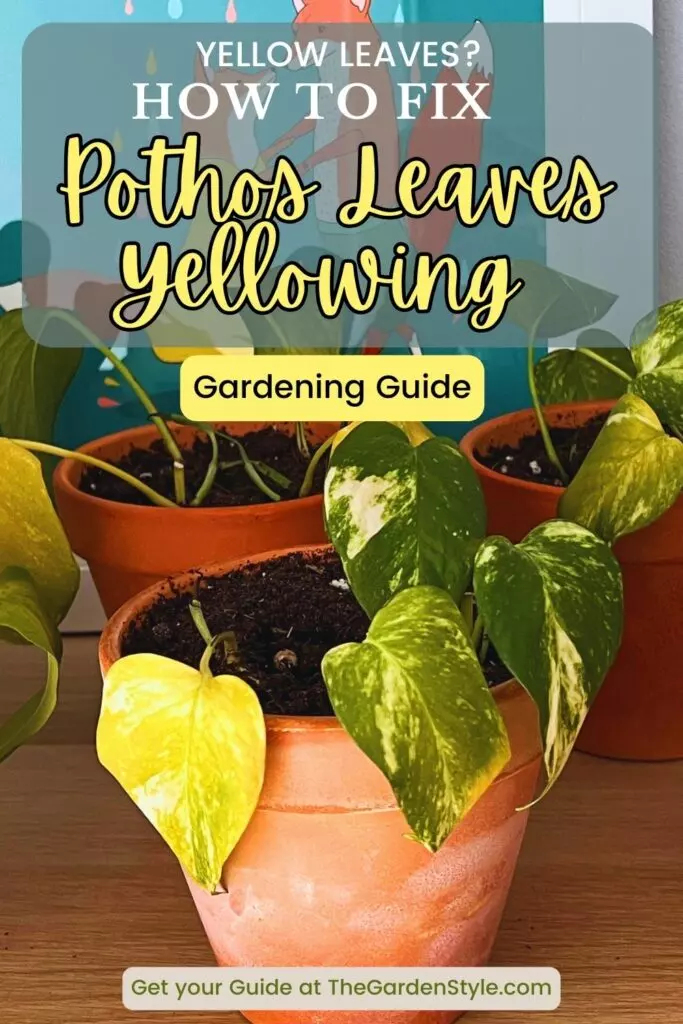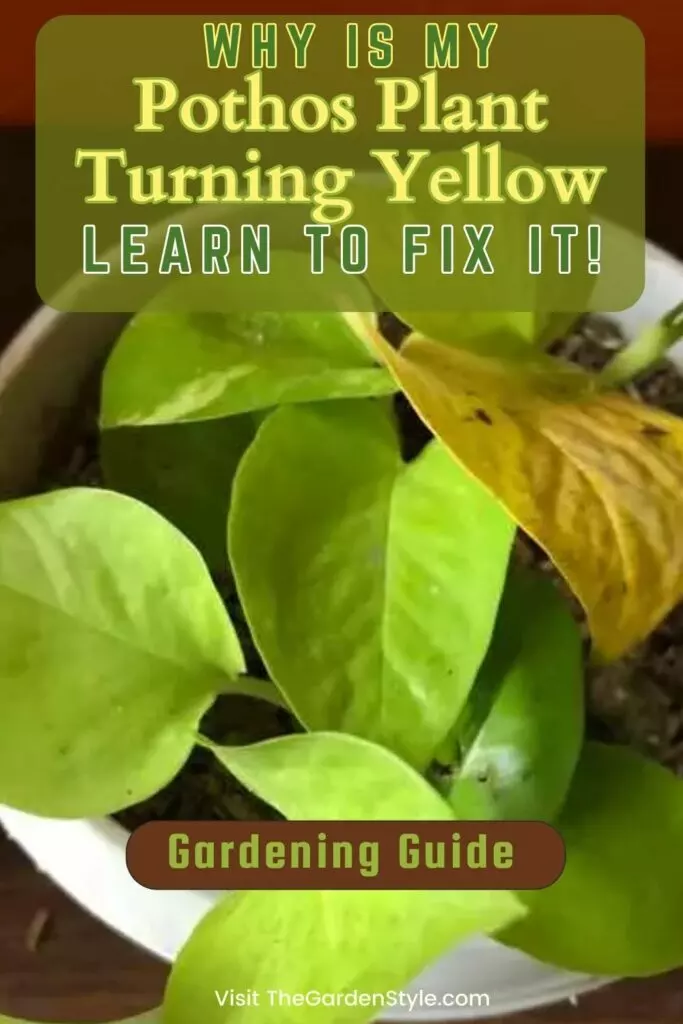Pothos leaves turning yellow? Revive your plant in no time. Before you panic, know that discolored leaves often mean simple environmental issues. While neon and golden Pothos varieties naturally showcase yellow, green leaf yellowing signals distress. Diagnose the underlying cause as soon as possible. Overwatering? Low light? Address issues like these ASAP to nurse your Pothos plant back to verdant health. Vigilant gardeners can catch problems early based on yellowing leaf cues. Implement solutions now, and soon, vibrant new growth will have your Pothos thriving again!
Table of Contents
Why Are My Pothos Leaves Turning Yellow?
Don’t despair over yellowing Pothos leaves! While the sight may worry you, rest assured there are several easily fixable reasons your Pothos foliage may be losing its green luster. If you are seeing yellow leaves on your Pothos plant, it could be due to one or more of the following reasons:
- Overwatering
- Underwatering
- Improper lighting
- Low humidity
- Nutrient deficiencies
- Root rot
- Pests and Diseases
- Age of plant
Overwatering
Overwatering is one of the most common reasons for yellowing leaves in Pothos plants. When the soil is constantly moist, the roots may start to rot, leading to yellow leaves. To avoid overwatering, make sure to allow the soil to dry out between watering sessions. Learn more about how to save overwatered Pothos.
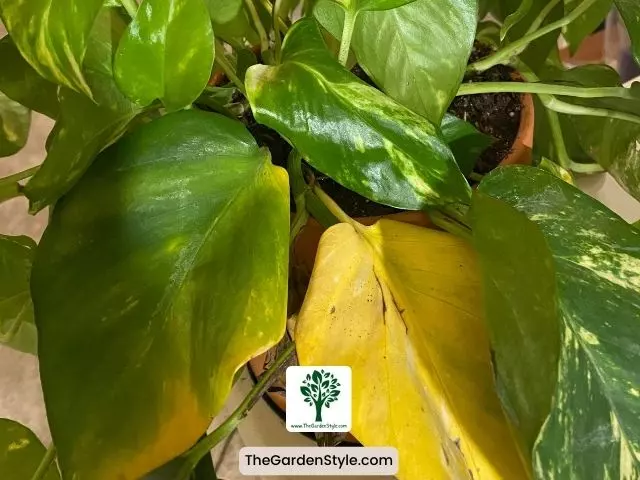
Underwatering
On the other hand, if you see yellow leaves that are dry and crispy, it could be due to underwatering. When the plant doesn’t receive enough water, it may start to shed leaves to conserve moisture. To fix this issue, make sure to water your Pothos regularly and keep the soil slightly moist.
Improper Lighting
Pothos plants require bright, indirect light to thrive. If your plant is not getting enough light, the leaves may turn yellow and drop off. Consider moving your plant to a brighter location or providing artificial light if necessary.
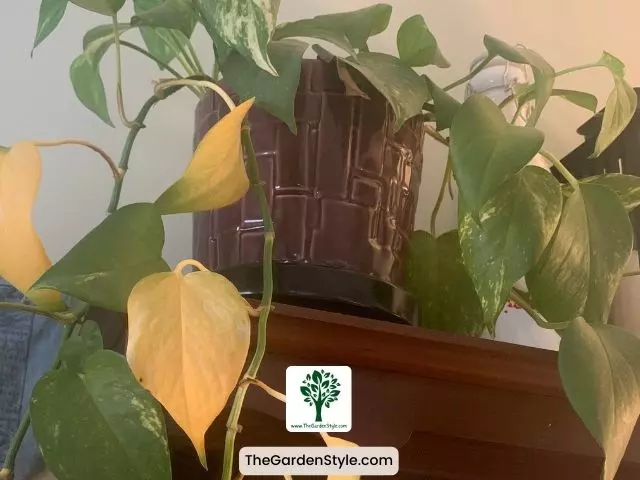
Low Humidity
Pothos plants prefer a humid environment, and low humidity levels can cause the leaves to turn yellow and brown. To increase humidity, you can place a humidifier near your plant or mist the leaves with water regularly.
Nutrient Deficiencies
Pothos plants require a balanced mix of nutrients to grow healthy and strong. If your plant is not getting enough nutrients, the leaves may turn yellow, and the growth may be stunted. Consider fertilizing your plant with a balanced fertilizer to provide the necessary nutrients.
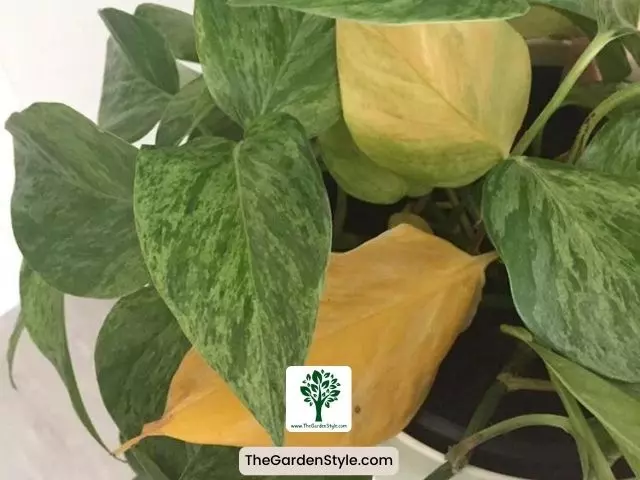
- FEED HOUSE PLANTS: liquid fertilizer promotes healthy growth and stops wilt better than granules or pellets. Our 3-1-2 Miracle ratio makes living indoor plants thrive in pots, holders, and hangers.
- GROW REAL HOME DECOR: 1 teaspoon for every 2 cups of water includes nitrogen, phosphorus and other vitamins to boost root and bloom growth — easy plant pot growing for up to 1 year.
Root Rot
Root rot is a fungal disease that can affect Pothos plants when the soil is constantly moist. The roots may start to rot, leading to yellow leaves and stunted growth. To prevent root rot, make sure to allow the soil to dry out between watering sessions and avoid overwatering.
Pests and Diseases
Both insect pests like aphids and mealybugs, as well as fungal/bacterial diseases, can contribute to yellow pothos leaves. Common diseases include leaf spot, which creates lesions with yellow halos, powdery mildew identified by white fungal coating, and mosaic virus distinguished by mottled yellow patterns. Monitor plants closely to catch infestations early and treat them with gentle soaps, oils, or fungicides as needed. Isolate or remove infected plants to prevent spreading to healthy ones nearby. Always properly disinfect gardening tools and pots after diseases.
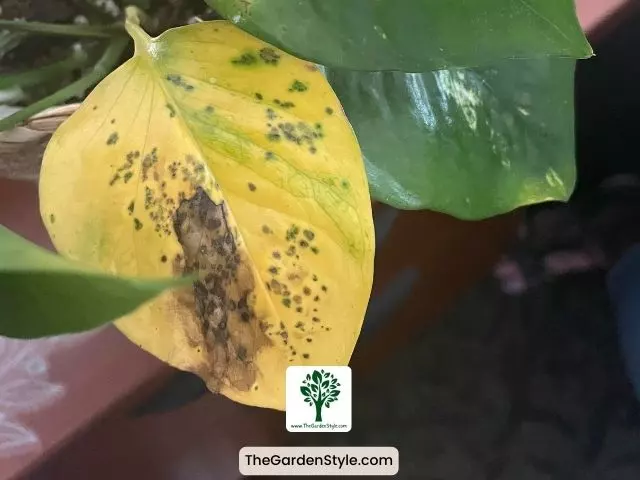
Age of the Plant
Finally, it is normal for Pothos plants to shed their older leaves as they age. If the yellow leaves are at the bottom of the plant and the newer leaves are healthy, there may not be anything to worry about.
| Why Are My Pothos Leaves Turning Yellow? | Signs and Symptoms | How to Fix It |
| Overwatering | Yellow leaves due to root rot | Allow soil to dry out between watering |
| Underwatering | Yellow leaves that are dry and crispy | Water regularly and keep the soil slightly moist |
| Improper Lighting | Yellow leaves and dropping off | Move the plant to a brighter location or provide artificial light |
| Low Humidity | Yellow and brown leaves | Increase humidity with a humidifier or misting |
| Nutrient Deficiencies | Yellow leaves and stunted growth | Fertilize with a balanced fertilizer |
| Root Rot | Yellow leaves due to root rot | Allow soil to dry out between watering and avoid overwatering |
| Pests and Diseases | Lesions with yellowing halos on leaves | Apply appropriate organic pesticide or fungicide. Isolate and treat infected plants |
| Age of the Plant | Normal shedding of older leaves | No need for action |
How Do I Fix Yellow Leaves on My Pothos?
If you have yellow leaves on your Pothos, don’t worry; there are several things you can do to fix the issue. Here are some steps you can take to get your Pothos thriving again:
Adjust Watering Based on Diagnoses
If your Pothos leaves are turning yellow, it could be due to overwatering or underwatering. Check the soil moisture level and adjust watering accordingly. You can also check the roots for any signs of rot or damage.
Provide Proper Indirect Sunlight
Pothos plants thrive in bright, indirect sunlight. If your plant is getting too much direct sunlight, it can cause the leaves to turn yellow. Move your plant to a location with more shade, or use a sheer curtain to filter the light.
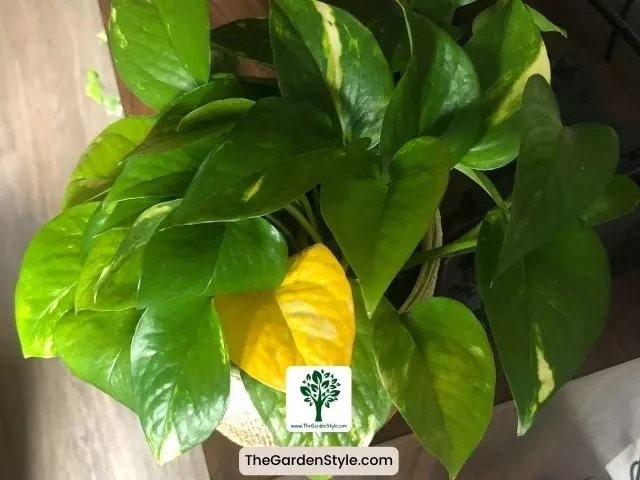
Use Pebble Trays or Humidifiers to Increase Humidity
Pothos plants prefer a humid environment, and low humidity can cause the leaves to turn yellow. You can increase humidity by using a pebble tray or a humidifier near your plant.
Apply Proper Balanced Fertilizer
If your Pothos leaves are turning yellow, it could be due to a lack of nutrients. Apply a balanced fertilizer to your plant every two weeks during the growing season.
Repot Plant If Root-Bound or Soil Drained
If your Pothos is root-bound or the soil is not draining properly, it can cause the leaves to turn yellow. Repot your plant in fresh, well-draining soil to help it thrive.
How To Fix Pests and Diseases in Pothos
| How to Diagnose | How to Fix Yellow Leaves Due to Pests and Diseases |
| Yellowing leaves, presence of aphids or mealybugs | – Use gentle soaps or oils to eliminate pests |
| – Prune affected parts | |
| – Isolate infected plants to prevent spreading | |
| Leaf spot with lesions and yellow halos | – Remove and dispose of infected leaves |
| – Apply fungicides if necessary | |
| Powdery mildew with white fungal coating | – Improve air circulation around the plant |
| – Use fungicidal treatments if the infection persists | |
| Mosaic virus with mottled yellow patterns | – Remove infected plants immediately to prevent further spread |
| – Disinfect gardening tools and pots thoroughly after handling infected plants to avoid transmission to healthy ones nearby |
Prune Vines Back to Encourage New Growth
If your Pothos is getting too leggy, it may be time to prune it back. Prune the vines back to encourage new growth and prevent the plant from becoming too top-heavy. Learn more about how to propagate Pothos in water.
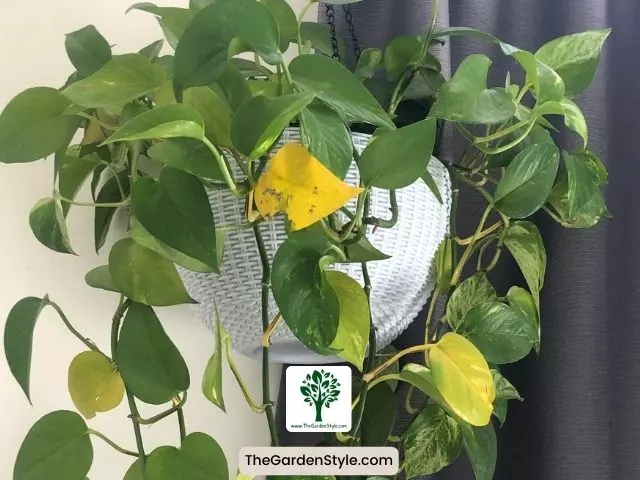
Should I Remove Yellow Leaves from Pothos?
Yes, you should remove yellow leaves from your Pothos. By removing the yellow leaves, you are not only improving the appearance of your plant, but you are also helping to prevent any potential issues from spreading to other parts of the plant. Also, removing yellow leaves from your Pothos will encourage the growth of new leaves.
When removing yellow leaves, it’s essential to use clean and sharp scissors or pruning shears. Make sure to cut the leaf stem as close to the base of the plant as possible. Avoid tearing the leaves, as this can cause damage to the plant. Learn more about Pothos plant care.
If this post about pothos leaves turning yellow was helpful, please share it:
